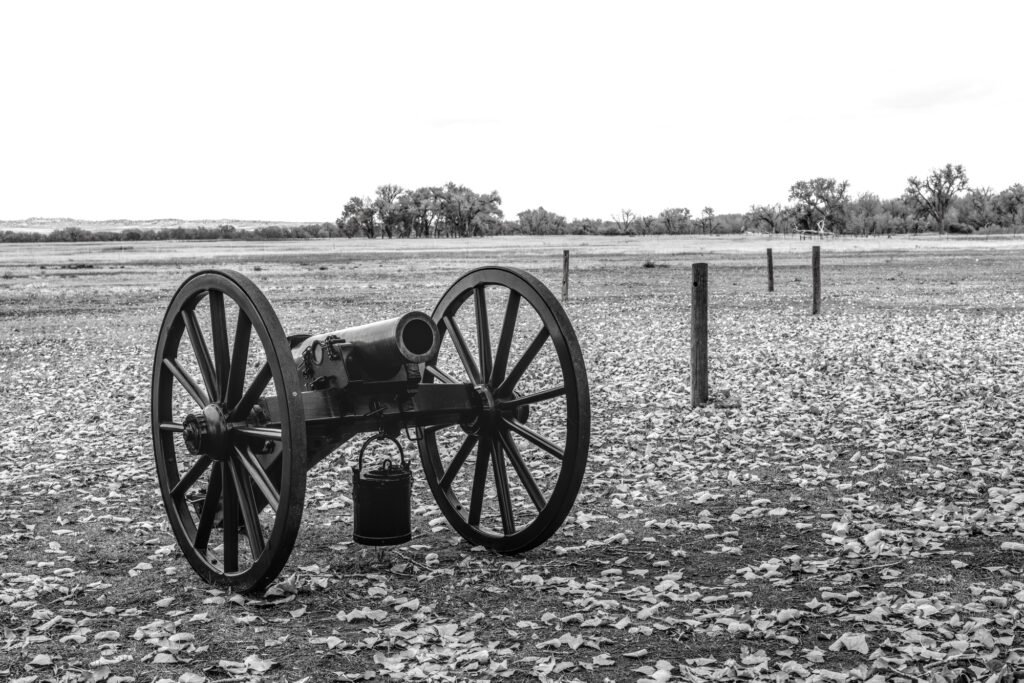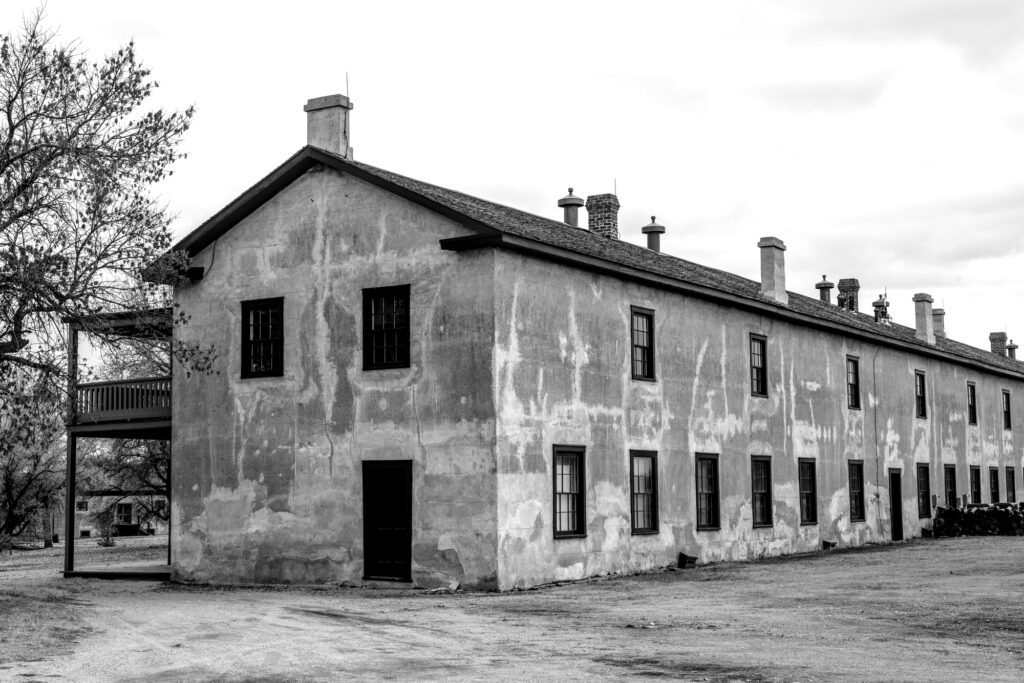| WYOMING |
Fort Laramie is a historic site located in Wyoming, United States. It holds great significance in the history of the American West and played a vital role in the development of the region. The fort began as a fur trading post in the early 1830s, known as Fort William. However, it gained prominence when it became a military post named Fort John in 1841. Later, in 1849, it was renamed Fort Laramie.
| ARRIVAL OF THE WHITES
Fort Laramie was strategically situated at the confluence of the Laramie and North Platte Rivers. It served as a crucial stopping point along the Oregon Trail, California Trail, and other major overland routes. The fort provided a place for travelers to rest, replenish supplies, and seek protection from Native American attacks.
During the mid-19th century, Fort Laramie became a central hub for military operations and diplomacy with Native American tribes. The United States government signed several treaties with tribes at the fort, aiming to establish peace and regulate trade. Notable treaties include the Treaty of Fort Laramie (1851) and the Treaty of Fort Laramie (1868), which defined territorial boundaries and rights of various tribes.

Fort Laramie played a significant role during the conflicts of the Indian Wars. It served as a base for military campaigns against Native American tribes, and soldiers stationed there protected settlers and travelers passing through the region. However, the fort faced challenges and tensions, leading to conflicts such as the Fetterman Fight in 1866 and the Wagon Box Fight in 1867.
The military importance of Fort Laramie diminished in the late 19th century as railroads became the primary means of transportation. The fort was officially decommissioned in 1890. Today, it is a National Historic Site and a popular tourist destination. The National Park Service manages the site, preserving and interpreting its historical significance.

The Fort Laramie Treaty of 1851 was a significant agreement between the United States government and various Plains Indian tribes. Here are some additional details about the treaty:
- Purpose and Participants: The primary purpose of the Fort Laramie Treaty was to establish peace and define territorial boundaries between the Plains Indian tribes and the United States. Representatives from several tribes participated in the negotiations, including the Sioux (including the Lakota and Dakota), Cheyenne, Arapaho, Crow, Assiniboine, Mandan, Hidatsa, and Arikara. These tribes inhabited vast areas of the Great Plains.
- Treaty Terms: The treaty consisted of several key provisions:
- Recognition of Tribal Territories: The treaty acknowledged specific tribal territories and recognized them as exclusive hunting grounds. The boundaries of these territories were delineated, granting the tribes control over designated areas for hunting buffalo and other wildlife.
- Safe Passage for Settlers: The United States agreed to establish and maintain designated emigrant routes, providing safe passage for settlers traveling through tribal lands. These routes, such as the Oregon Trail and the California Trail, were important for westward expansion.
- Annuity Payments: In exchange for the tribes’ cooperation and the cessation of hostilities against settlers, the United States government promised to provide annuities, or annual payments, to the tribes. These payments typically included provisions like food, supplies, and other goods.
- Tribal Consent for Future Land Cessions: The treaty emphasized that any future land cessions by the tribes would only occur with the full and free consent of the tribal members. This provision was intended to protect tribal lands from unauthorized encroachment.
| IMPACT AND CHALLENGES
- Impact and Challenges: The Fort Laramie Treaty of 1851 had both positive and negative consequences:
- Temporary Peace: Initially, the treaty brought a period of relative peace between the tribes and the United States, reducing conflicts and violence in the region. It allowed for increased interaction and trade between Native Americans and settlers.
- Broken Promises and Conflict: However, the peace established by the treaty was short-lived. As more settlers moved westward, conflicts arose over land, resources, and the violation of treaty terms. The discovery of gold in the Black Hills of South Dakota in the 1870s further strained relations, leading to increased tensions and broken promises.
- Historical Significance: The Fort Laramie Treaty of 1851 served as a precedent for future treaties and negotiations with Native American tribes. It highlighted the ongoing struggle between the United States government’s desire for westward expansion and the tribes’ efforts to maintain their lands, cultures, and ways of life.
| BROKEN PROMISES
It’s important to note that despite the intentions of the treaty, subsequent events and broken promises contributed to further conflicts and upheaval in the years that followed. The history of Native American relations with the United States government is complex and encompasses a range of treaties, conflicts, and cultural changes.
Visitors to Fort Laramie can explore various restored buildings, including officers’ quarters, barracks, and the original trading post. The site offers guided tours, exhibits, and interpretive programs that provide insights into the lives of soldiers, traders, and Native Americans during the fort’s active years. It offers a glimpse into the rich history of the American West and the complex interactions between different cultures in the region.
| CREDITS & RESEARCH
Fort Laramie historic Archives
Story and Photography by: Hawk Buckman






